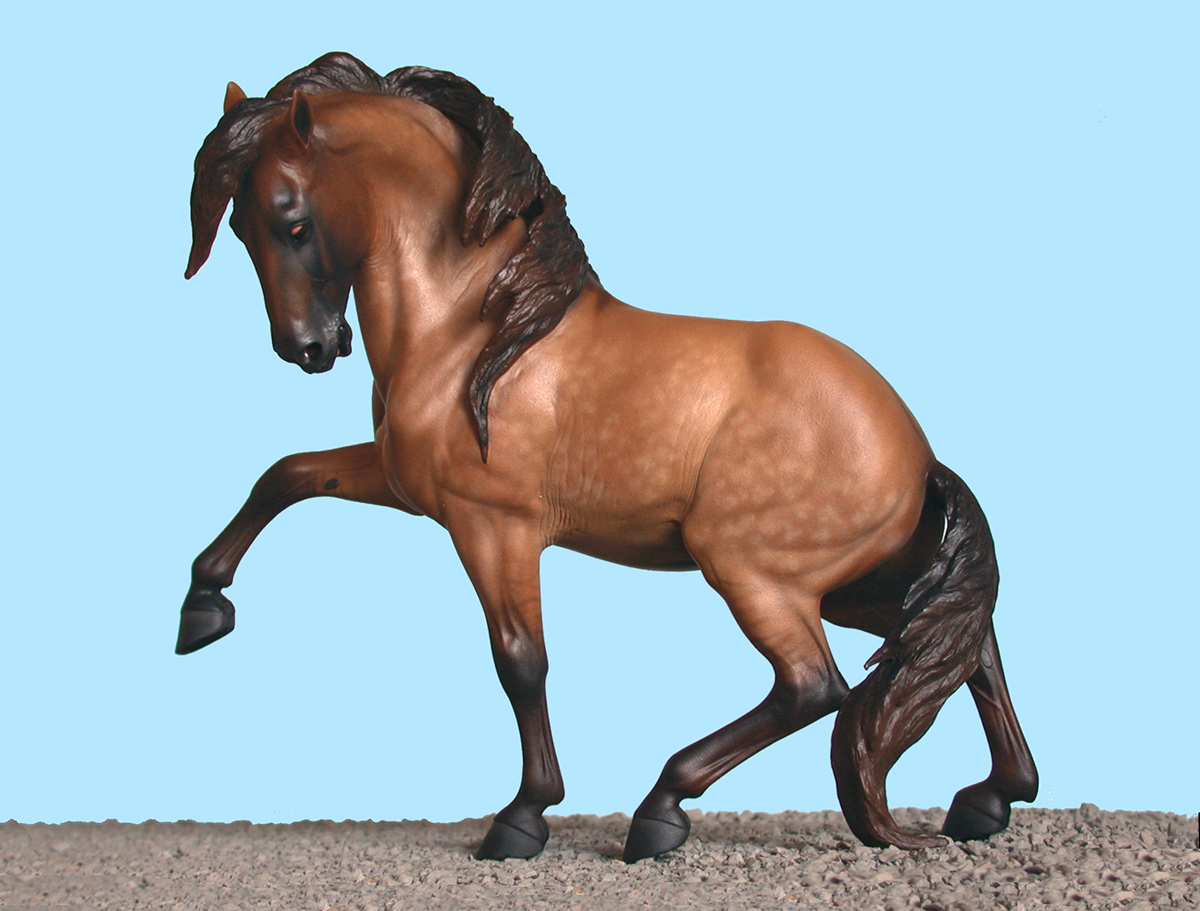As showholders, we have not to my knowledge ever really talked about the factors that influence our classlists. In her intro to her exciting new breed list, Lesli Kathman hinted at some and I would characterize them this way:
- “Like with like” - Horses that look the same should show together
- “Numbers” - Equally-sized classes across the sections, equal numbers of classes in the sections
- “Engaging“ – groupings of horses that are fun to spectate
- “Quality balance” - the best bodies not jammed into a single class in a section
- “Predictable” - internal consistency that allows entrants to independently predict where horses go
- “Not Too Granular” - avoiding classes that have 60 word-long names to achieve a particular number of horses (“glossy non-dilute solid Hamilton event SRs under 1k produced <2023”)
It is harder to meet these objectives than it once was.
About 25 years ago, the artist Sarah Rose up-ended our universe when she offered us the great Spanish horse sculptures, Brioso and Deseoso, in artist resin. This unleashed a mania for Iberians that penetrated all the way into the plastic world, leading to the development of horses like Esprit and the Breyer Andalusian. Next, cue Brigitte Eberl, her resins, and her Breyer horses.
There were now enough Iberians to make “Light” numerically overweight and too much an engagement center of the show, so PREs are now usually moved to another section (see N2). But moving the Iberians out transforms the Light section into the “Arab” section, along with Morgans as a sort of redheaded stepchild, and that does not have much appeal, either.
Lesli’s new breed list offers us some alternative classifications and groupings that give showholders options in cases where historical hobby groupings, such as the old “Light” catalogue, no longer allow us to achieve classlist objectives. She also proposes solutions to perpetual problems like the placement of Irish Cobs.
So take a good look at her new silhouette-based breed list, absorb the changes and innovations within it, and think about how and to what degree you will incorporate it into your next show. Debate its implications with your friends (N4). What I’m hoping to see in the future are classlists that are more thoughtful and logical, less clunky, and easy for entrants to apply without constant resort to a breed list (see N5).
NOTES
N1 - A bit of an editorial. I dislike the practice of having a single “part Arab” class. Put the part-Arabians with other partbreds in the “other pure/part” class, in the section that matches the horse’s type. If you’re worried about having too many “light“ part-arabs in your Light section “other pure/part” class, then change the class name to “light type part-arab” and let us continue to show our Welaras in the “other pure/part pony” class.
N2 - Sometimes there are not quite enough for a freestanding Spanish section, and so they get moved into an awkward combined section like “Spanish/Gaited,” where you no longer have “like with like.”
N3 - The real horse world was also experiencing piqued interest in PRE-ish horses.
N4 - Now some of you are going, “oh for christ sake, can’t we just have fun and get out of the ivory tower.” Listen, we are real people who bake (or in my case, eat) cookies, lose TV remotes, and trip over the cat. The reason this deserves your attention is because it really affects your show experience, it’s interesting, and most of us are equally qualified to offer an opinion on it.
N5 - Her list is innovative and it requires rethinking our historical classifications, so it’s my expectation that people will need to refer to it a lot in the beginning. But hopefully the logic around it will become intuitive and reduce people’s dependence on breed lists in future.
Pictured below - the culprit known as Brioso

I like the morphology approach of Lesli’s list very much, as it relates common sources and appearances beyond geography. I am not showing new pieces yet, but while I think of them as a diverse collection, I have heavier Arabian, Old World Spanish, and draft horse contingents, which are always well-represented classes/groups in CM and AR. Familiar with my region’s scope, I’ll be re-entering mostly socially to see how my work looks on the table to me in company.
I love this new list, and the engagement and ideas it represents. Super interesting to think about breeds and model horse show class lists in this way.
It’s important for us to keep thinking and innovating as we get new molds and new opportunities!

